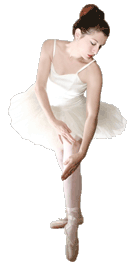At WiseGEEK, we're committed to delivering accurate, trustworthy information. Our expert-authored content is rigorously fact-checked and sourced from credible authorities. Discover how we uphold the highest standards in providing you with reliable knowledge.
What is the Schottische?
Beginning life as a Bohemian dance, the Schottische found its way into many different countries and adapted to a number of different musical genres over the years. This country dance with its series of two runs and a hop coupled with four turning steps, is relatively easy to master and had just the right moves to find a way to work with so many different settings. Here are some of the highlights of the history of the schottische as the dance found its way into many countries and cultures.
Schottische dancing traces its origins back to the Victorian era. The schottische dance was considered an integral part of the folk dance craze that was a staple for much of the period. During this time, the schottische began to migrate into other countries and develop followings among the folk music and dance traditions of Europe.

For example, variations of the schottische made an impact in France, Portugal, Italy, Sweden, and Spain. As expected, composers in each country began to compose musical pieces that were ideal for dancing with the schottische. Schottische music served to increase the popularity of the dance moves and kept the schottische in the forefront of popular dance all through the 19th century.
At the beginning of the 20th century, the schottische made a jump to the New World, making its mark in the United States. The schottische adapted to the local culture, melding into a hybrid with ragtime. Such notable ragtime composers as Thomas S. Allen and Buddy Bolden wrote and performed these newer schottische and ragtime combinations, often referred to as hot schottisches.
The success of this newer version of the schottische helped to spread the popular of ragtime in general and even began to influence the course of American jazz music. For the first two decades of the century, it was hard to find any club in New Orleans that did not include music that was ideal for the schottische dance.
During the remainder of the 20th century, the schottische continued to broaden its influence, becoming an integral part of country and western dancing, especially promenade dancing. The similarity of the moves to the polka helped to the schottische to connect with country western fans, as well as some folk and bluegrass enthusiasts as well. After a successful launch in the United States, the schottische began to make an impact in such South American countries, most notably Brazil.
Modern day schottische dancing has a strong affinity to reggae as well as continuing to influence line dancing in country music. While the dance has gone through some adaptations over time, schottische dancing continues to survive in a number of different cultures and always with an appreciative base of dancers to keep it alive.
AS FEATURED ON:
AS FEATURED ON:










Discussion Comments
Are there any particular schottische recordings that are well-known, especially for someone wanting to learn this dance? I can find instructions on the steps, but I tend not to be the most graceful, so would rather not learn in public. If there was something I could listen to at home, that would be great, but I want something that isn't too out of date--I'd like to be able to dance it in public when I get there.
Post your comments